The first daffodils fringe the canal at Callis, while on the other side of the towpath, among the communal gardens of the narrowboat community, snowdrops crowd on the edge of the hazel coppice. In Ingham Clough, at the base of an unnamed and unheralded waterfall, boulders wear a shaggy coat of moss threaded with lesser celandine and wood sorrell. A wren darts into the ivy-tangled sycamore roots that overhang the waterfall’s amphitheatre escarpment, and roe deer furtively move among the deep green shadows of the holly. Two candles sit either side of the lip of the waterfall; upstream, where a bend in the stream creates a little flat area, is an old encampment of tarps; and downstream, a little ring of stones was once made for a fire. But it is an unfrequented place; what paths there are peter out and, unlike so many other cloughs in the area, there is little evidence of past use – there were never any mills here. It’s just too steep, a water-cut incision, a place folded in on itself, sunk into the landscape like a forgotten holloway. Above the clough, the brightening day seeps into East Rodwell Head’s cavernous barn and the Dolly Blue-tinged interior of its scullery, and its garden of magnificent cherry trees holds a promise of spindrifts of blossom. It is 40 years and more since Eileen farmed here, alone, but the farm still remembers her, as do some older neighbours.
The following day and 25 moorland miles south, frigid fog hunkers in Edale. The 10.30 train disgorges its cargo of walkers who, having spent the journey practically salivating at the glory of the morning, pause for a bemused moment on the platform to wonder how the day that was pledged seems to have been snatched away in the time it took to go through the Crowburn Tunnel. But they soon scatter to the hills, and it takes all of 300 feet of ascent to find that, far from the fog dashing the hopes of a hill day for the ages, it is there to ensure it, for the mist forms an ephemeral glacier that drifts down Edale and bends around the end of the three-mile ridge of Mam Tor to join a much larger ice sheet that sprawls across the Hope Valley. The warm sun gradually melts this covering as the day goes on until it is gossamer-thin, and farms and fields appear to be under a filmy water’s surface.
To the south, thunderous rumbling emanates more or less constantly from the Hope Cement Works and its vast limestone and shale quarries. The incongruity of this operation and its enormous plant with its belching chimney is explained by the fact that it long predates the creation of the Peak District National Park. But while it would never have obtained permission once the park’s strict planning laws were established, the owners proudly point to the restoration for wildlife of disused parts of its quarries, to the 200 local jobs and millions of pounds it brings into the community, and to the fact that much of its product is carried on the rail network. And it’s not the only incongruity to be found within the borders of the national park – on far horizons, smoke billows from controlled heather burning on moors managed for driven grouse shooting, a practice that is under intense scrutiny.
A happy procession of half-term visitors traverses the ridge all day, from Lord’s Seat to Lose Hill. A swarm of paragliders dance above the western end like red kites at a feeding station, but a kestrel is on hand to show them the real meaning of aerial grace. A flock of meadow pipits cuts through the stream of promenaders to get from one side of the hills to the other, while crows soar over the summits on the hunt for pickings. To the north, the bulk of Kinder Scout grades from the green of the pastures and meadows – one of which is being treated to a liberal spreading of muck – to the fawn of tougher moorland grasses, the russet of dead bracken and the brown cap of its heather-clad plateau. On Back Tor, families build cairns with an endless supply of stackable stones. No one is in any hurry to descend to the valley; the air is still and warm, the sun suspended over the ridge, the day a promise that spring, though not quite here yet, will come.
At Keighley’s Cliffe Castle, Hester Cox’s beautiful collagraph prints of curlews among the cotton grass, and lapwings among the cuckoo flowers, bring them to life in a way that the sad stuffed specimens in the museum, shot a century ago and faded now, fail to. But nonetheless, the avian collection is impressively large and naturalistically staged in their habitats, frozen in aspic behind glass, dusty and dead-eyed, yet fascinating all the same. Capercaillie strut, goshawks stoop, ragged-trousered snowy owls brave the northern winter. And it’s not only the wildlife that is staged; a mannequin that possesses a reasonable degree of likeness to Timothy Feather, the last, and therefore the most famous, handloom weaver in the district, stands beside Timmy’s actual loom, silent since he died in 1910. And he looks across to a display of the other essential tools of the hundreds of little hill farms in this part of the Pennines; the spades, rakes and scythes that tamed their few acres claimed from the moor’s ‘waste’.


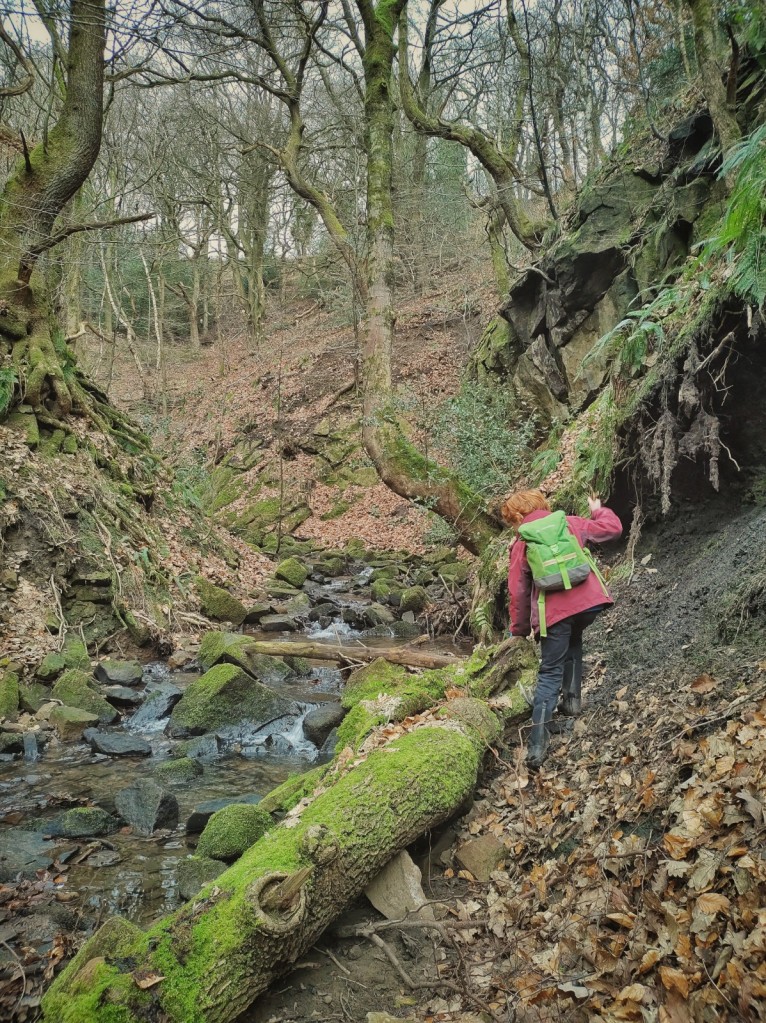


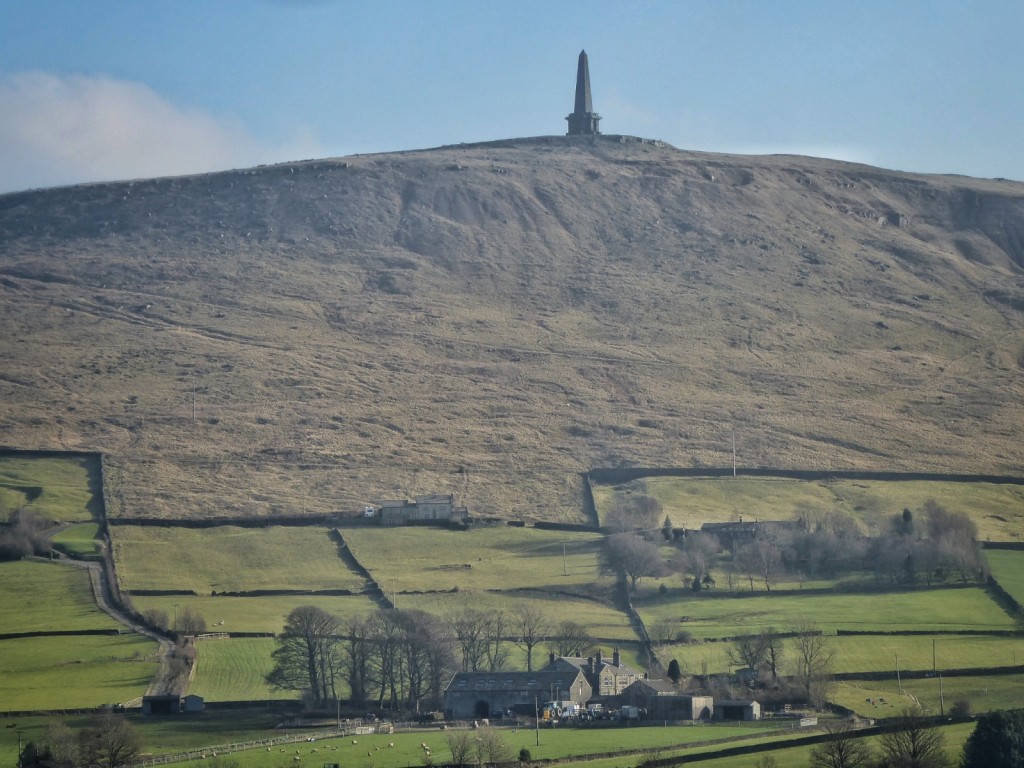
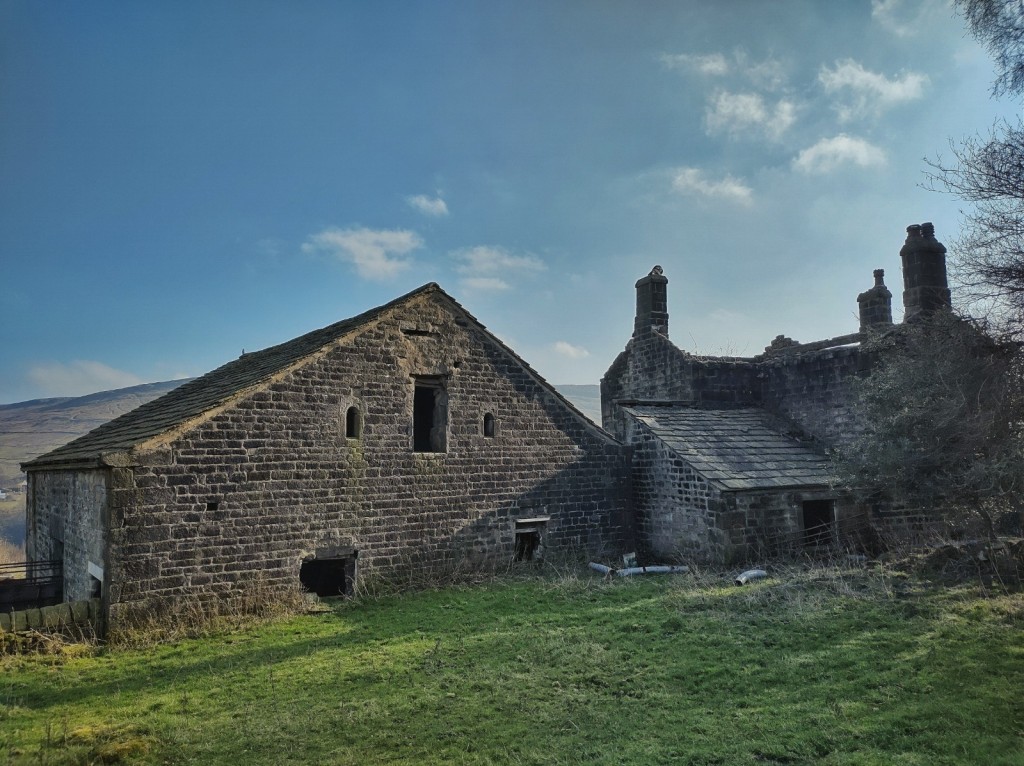


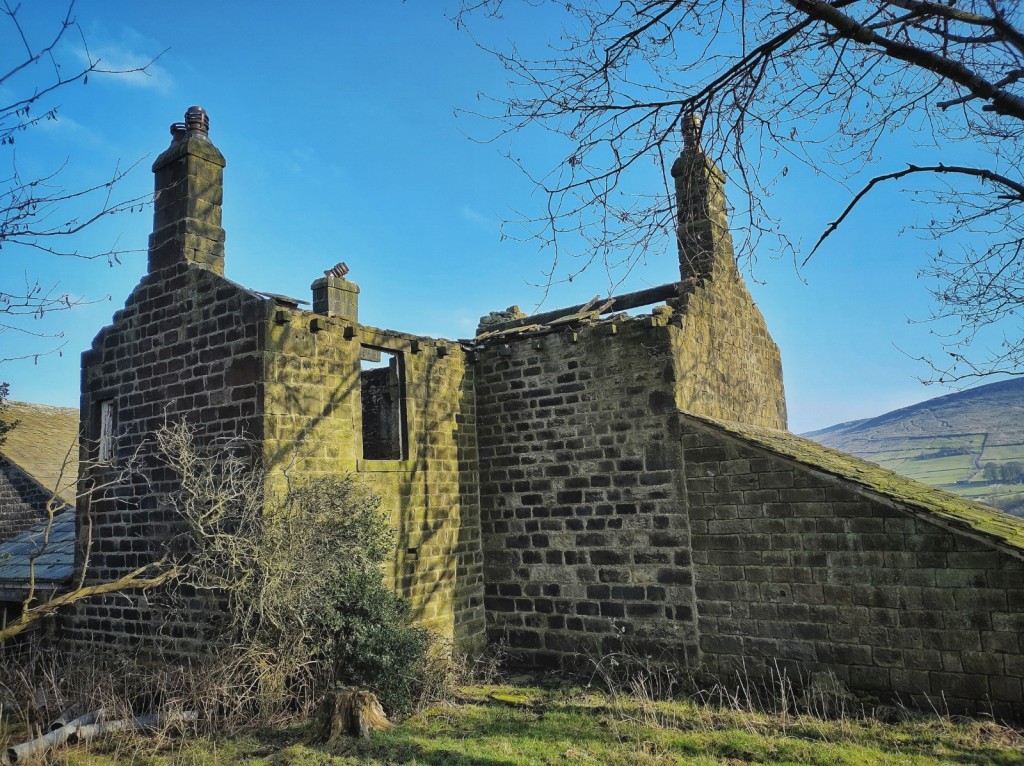

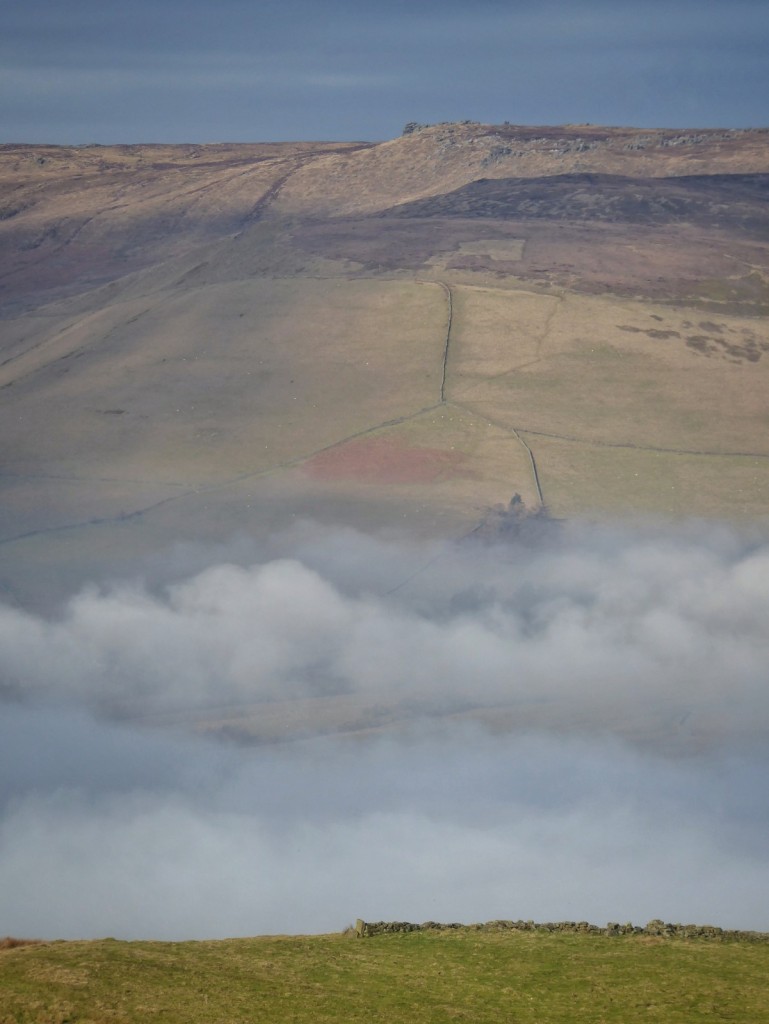



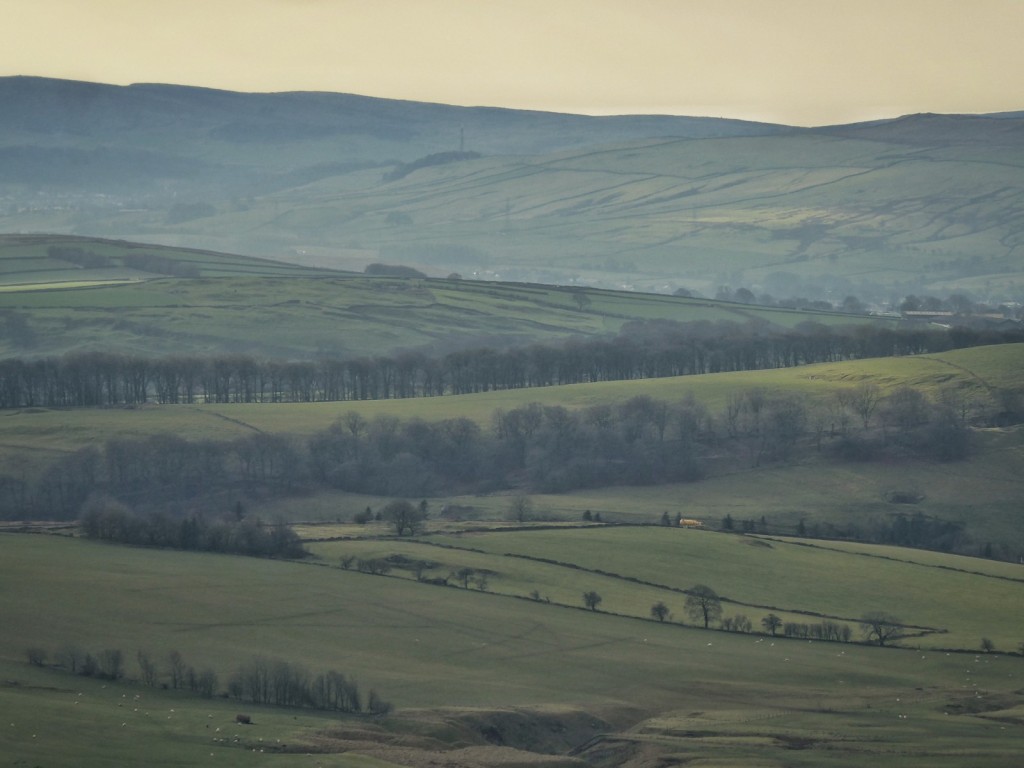





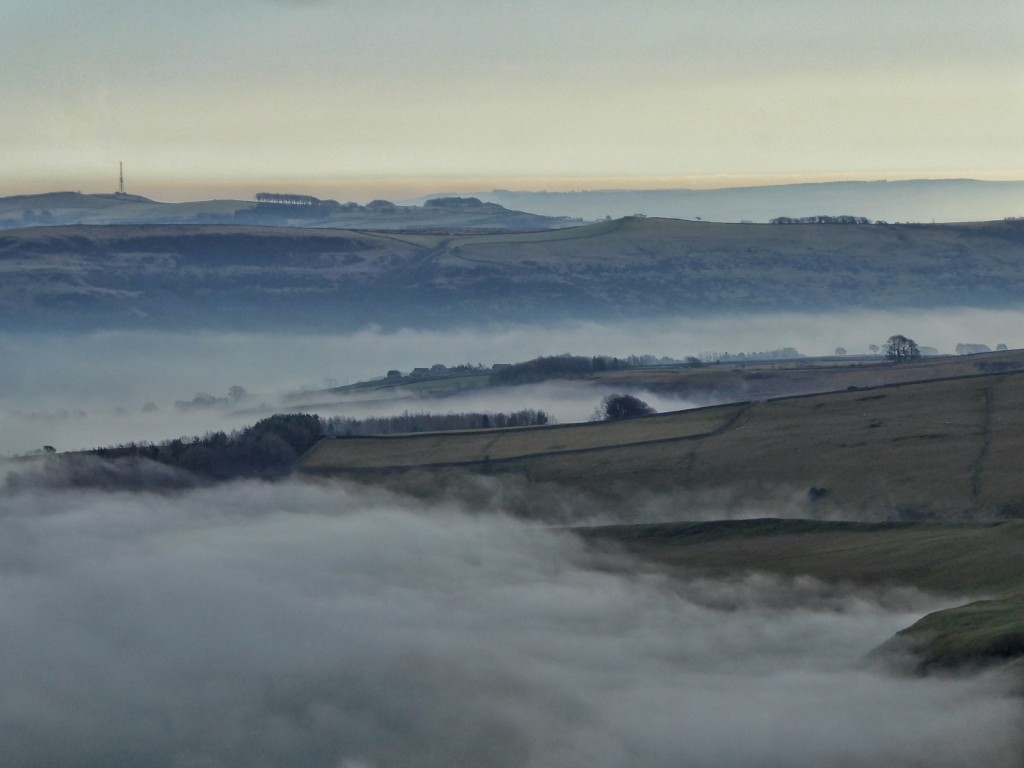









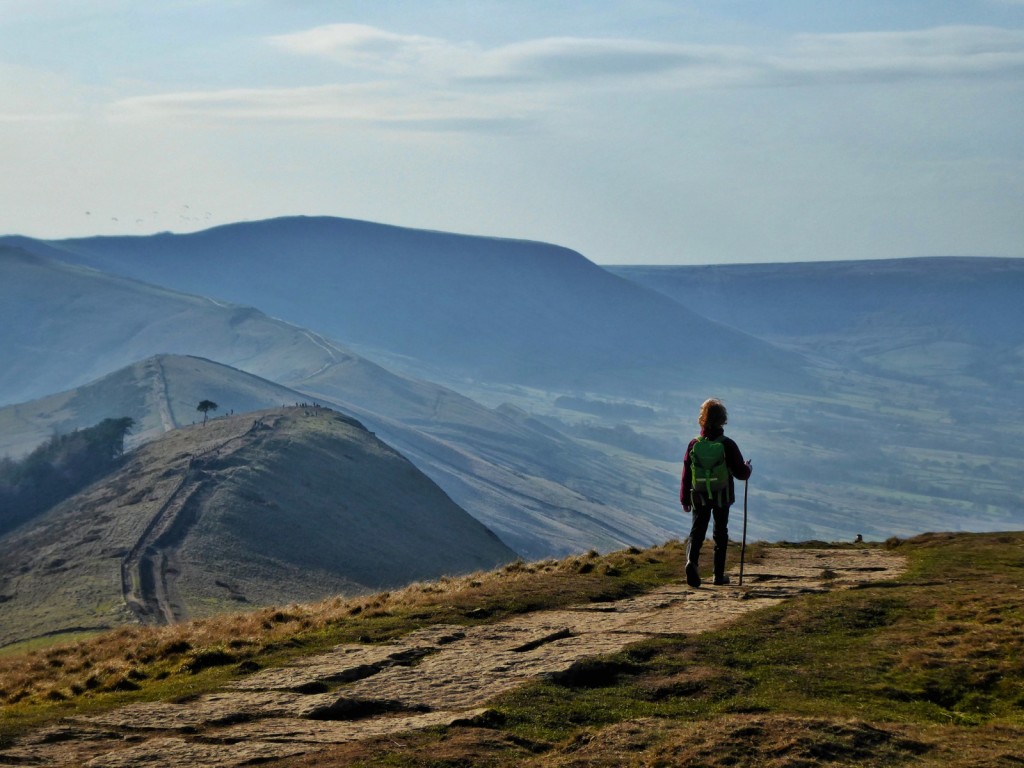





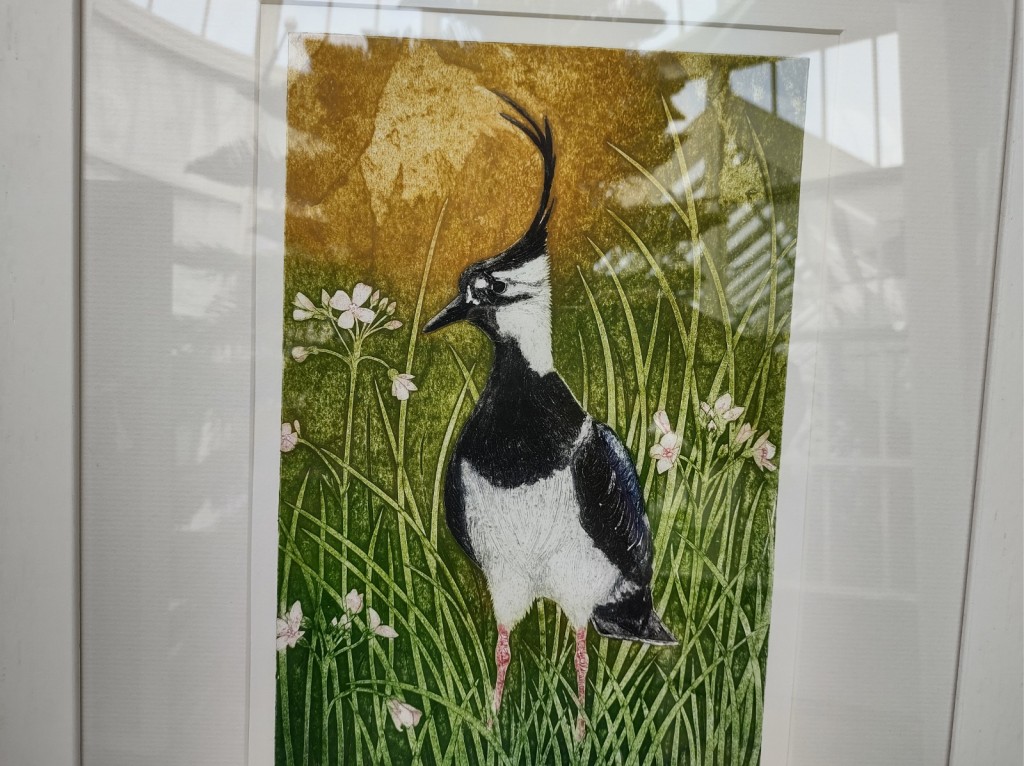
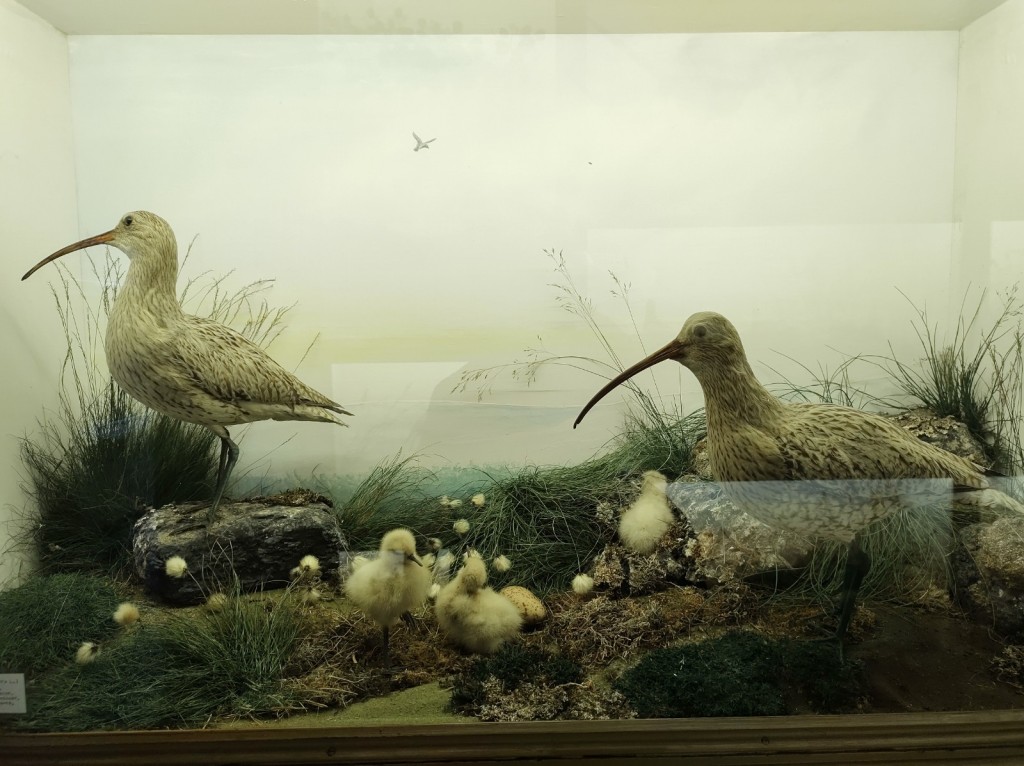



It must have been Eileen that challenged us with a shotgun as we walked through Rodwell End farmyard late 70s!!!
Sent from my iPhone
LikeLike
Goodness! If that was her, it would add to the legend…
LikeLike
It must have been! Although there was no shortage of feisty women farmers. There was another next to the Top Brink who had a lovely black shire pony that she used to pull various bits of machinery. So long ago!
LikeLike
Amazing photos of fabulous views! What a wonderful hike with your son! Thelma shared the link to your blog and I am so glad she did!
LikeLike
That’s lovely of you to say so, Ellen. I’m very glad you enjoyed it.
LikeLike